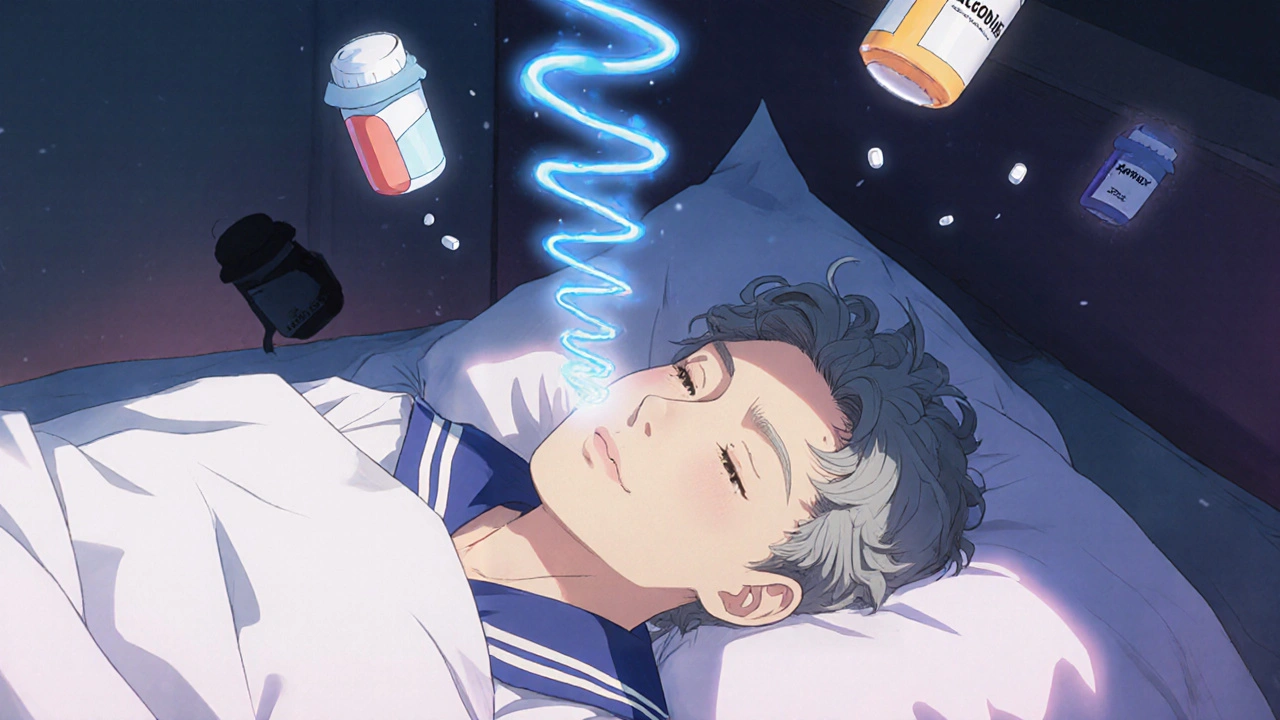Benzodiazepines and Opioids: Risks, Interactions, and Safer Alternatives
When you mix benzodiazepines, a class of sedative drugs used for anxiety, seizures, and insomnia. Also known as benzos, they slow down brain activity to calm the nervous system. with opioids, powerful painkillers like oxycodone, hydrocodone, and fentanyl that bind to brain receptors to reduce pain. Also known as narcotics, they can cause drowsiness and slow breathing., the result isn’t just stronger sedation—it’s life-threatening. The CDC found that over 30% of opioid overdose deaths also involved benzodiazepines. This isn’t a rare accident. It’s a predictable outcome when two central nervous system depressants team up. Your breathing doesn’t just slow—it can stop. Your heart doesn’t just weaken—it can fail. And it happens faster than most people realize.
Doctors sometimes prescribe these together—for example, someone with chronic pain and severe anxiety—but the risks almost always outweigh the benefits. Even when taken as directed, the combo increases the chance of falling, confusion, and accidental overdose. If you’re on either one, ask your doctor: Is this really necessary? There are safer ways to manage pain without opioids, like physical therapy, nerve blocks, or non-addictive meds like gabapentin. For anxiety, therapy, SSRIs, or even mindfulness practices often work better long-term than benzos, which lose effectiveness over time and can trigger dependence.
What about people who already take both? The first step isn’t panic—it’s a plan. Never quit either drug cold turkey. Withdrawal from benzos can cause seizures. Stopping opioids suddenly brings intense flu-like symptoms and cravings. A doctor can help you taper one or both slowly, safely, and with support. Naloxone, the overdose reversal drug, should be kept on hand if you or someone you know uses these drugs. It doesn’t fix everything, but it can buy time. And if you’re struggling with addiction, medication-assisted treatment like buprenorphine or methadone can be life-changing.
There’s a myth that if you’re "just taking them as prescribed," you’re safe. But addiction doesn’t care about prescriptions. It cares about brain chemistry. The more you use, the more your body adapts—and the harder it becomes to stop. That’s why so many people end up switching to street drugs like heroin when their prescriptions run out. The path from pill to powder isn’t a choice—it’s a chemical trap.
What you’ll find below are real, practical comparisons and guides on related medications—like how gabapentin stacks up against opioids for nerve pain, or how alternatives to benzos like hydroxyzine or melatonin can help without the same risks. These aren’t theoretical discussions. They’re tools for people who’ve seen the damage these drugs cause and want to make smarter, safer choices. Whether you’re a patient, a caregiver, or just trying to understand the headlines, this collection gives you the facts you need to protect yourself and others.

Combining benzodiazepines and opioids dramatically increases the risk of fatal respiratory depression. This deadly interaction suppresses breathing more than either drug alone, leading to thousands of preventable overdose deaths each year.
Read More